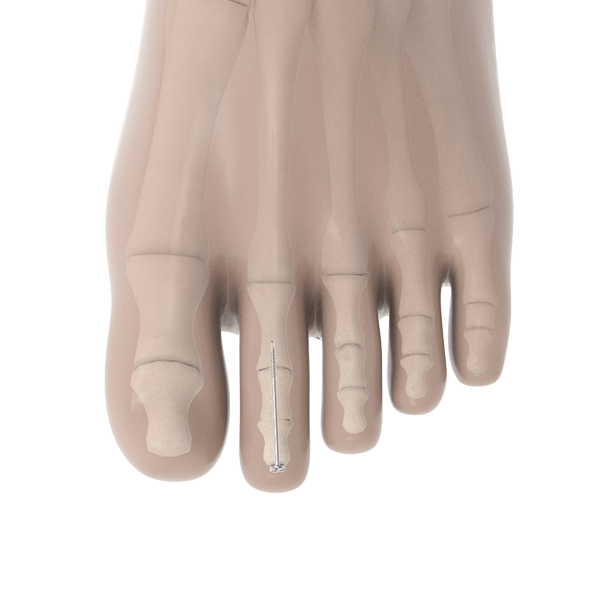
Hammertoes
Understanding Hammertoes
An abnormal bending of the 2nd, 3rd, 4th, and/or even the 5th joint in between the phalanges is known as a hammertoe. The most common cause is due to a muscle and/or tendon imbalance due to abnormal mechanics of the foot along with congenital factors. There are two types of hammertoes:
- Flexible hammertoes: movement is still possible at the joint. This is a milder condition and there are several treatments for this condition
- Rigid hammertoes: the tendons become rigid and the toe can no longer be moved. This usually means surgery is needed.
Symptoms
Common symptoms of hammertoes are:
- Abnormal bending of the toe
- Pain or irritation
- Forming of corns and calluses (build up of skin).
Treatments
There are always non-operative alternatives for hammertoes such as:
- Shoe modifications
- Splinting of the toe
- Padding or trimming corns and calluses
- Exercises or therapy
- Medications
When non-operative solutions are no longer able to control the pain and disability to your satisfaction, surgery becomes a reasonable option. Surgical options include:
Joint Fusion (arthrodesis) – The cartilage surfaces of the joint are removed and a device such as a screw is utilized to prevent motion. The bones eventually grow together which prevents pain; however, a loss of function occurs as the joint will no longer bend.
Phalangeal head resection (arthroplasty) – a portion of the phalanx is removed, releasing tension on the tendons. This may be done in conjunction with or without some type of implant. Advantages include retaining motion, but may be accompanied by a flail toe and loss of stability.
Tendon Transfers – the tendons that are too tight may be cut or transferred to relieve the tension and allow the toe to straighten. While this allows motion to be retained, like the head resection it can lead to a flail toe or loss of stability.
Why the BioPro Digital Compression Screw?
The Digital Compression Screw is used to fuse the joint, permanently straightening it. Unlike some other options, it provides compressive forces across the bones, which speed the fusion process. The screw is also buried beneath the skin, allowing the patient to wash their feet with no exposed wires, eliminating the potential for pin track infections. The Digital Compression Screw is also easily removed. Some devices permanently remain within the bone and require very invasive surgeries if removal is necessary.
What to expect during and after hammertoe surgery
The goal of the surgeon is to restore normal alignment of the joint and eliminate pain by fusing the joint. A Digital Compression Screw is inserted into the tip of the toe and compresses the bones together, speeding the fusion process. The screw typically stays in for 6-8 weeks while the bones heal, after which it is removed.
Varying degrees of hammertoe deformities with severe contracture and/or displacement on the metatarsal heads may require your surgeon to perform additional procedures in conjunction with the hammertoe repair. These may include metatarsal osteotomies or tendon transfers to maintain toe purchase after fusion.
Most patients have a rapid recovery and have considerably less pain than they did before surgery. Weight-bearing is only allowed while wearing a stiff soled post-operative shoe until the screw is removed.
Learn what treatments may be right for you.
Find a Surgeon
Fill out the contact form or call us at 810-982-7777 to see if there is an experienced surgeon in your area.
Consult with your surgeon
Discuss all your possible treatment options and expectations after surgery.